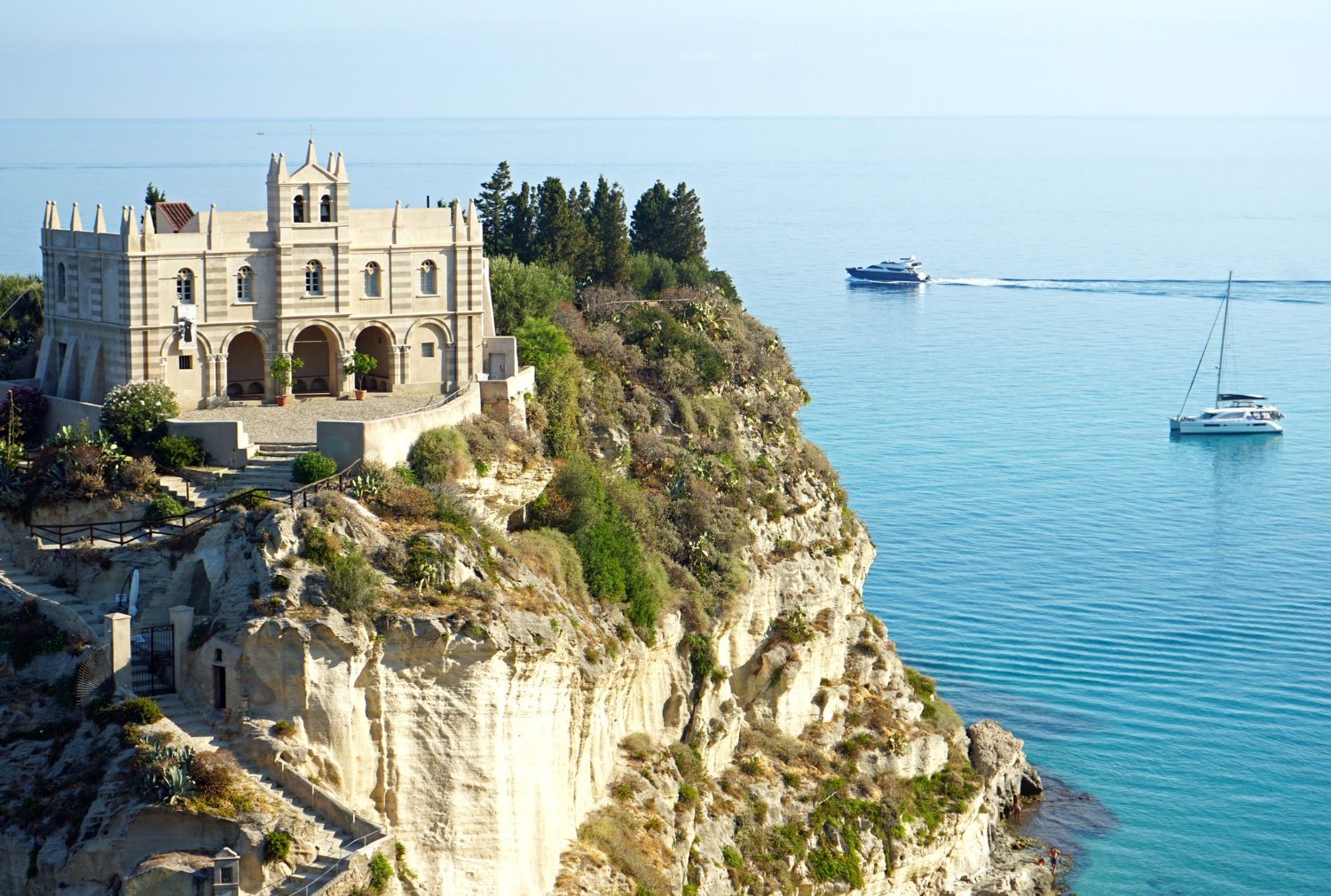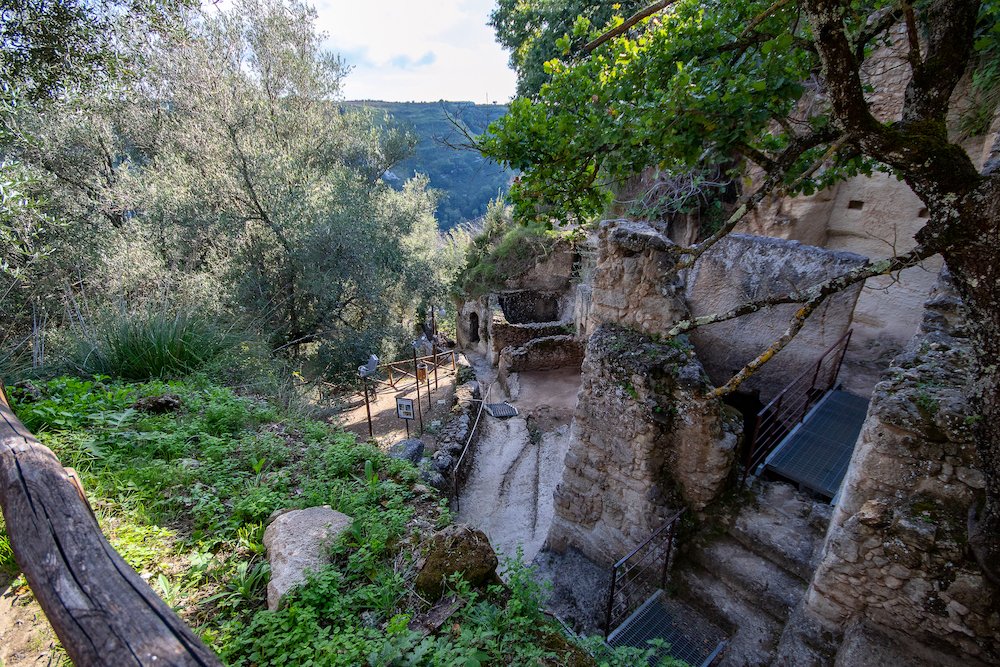55 kilometres of beaches, 9 town centres and an area of unique beauty. The Costa degli Dei (Coast of the Gods) owes its name to a legend: according to popular tradition, the gods used to dive into these waters, which today we would call Caribbean, to refresh themselves after strenuous undertakings and activities. However much the myth remains confined to the universe of fantasy, it always retains some truth. Indeed, the wild coastline of the place, the colours of the crystal-clear sea and the sensation of well-being and relaxation that one gets from being in contact with this dream land make the Costa degli Dei a true paradise on earth.

The Costa degli Dei or 'Costa Bella' in Calabria is a magnificent stretch of coastline in the province of Vibo Valentia. This includes the area known as the 'Horn of Calabria': a geographical region with around 55 kilometres of beaches and the nine municipalities of Pizzo Calabro, Vibo Valentia, Briatico, Zambrone, Parghelia, Tropea, Ricadi, Joppolo and Nicotera. The inhabited centres are jewels rich in history and tradition a few steps from the sea, with views of the Aeolian Islands, and the beaches, as on the Calabrian coastal stretches, have a varied and very different conformation: white or golden sand alternates with rocks or pebbles and splendid, easily accessible beaches are interspersed with small, charming bays to be reached exclusively on foot or by sea. The territory of the Costa degli Dei has an ancient history: traces of human presence date back to the Neolithic and Villanovan phases (as demonstrated by some finds discovered in Tropea), although the first real settlements were those made by first Greek and then Roman colonists: it was the latter who founded Vibo Valentia (whose name contains references to the strength and importance of the place). After the fall of the Roman Empire, the territories experienced Byzantine, Swabian, Angevin and then Aragonese domination: this succession of peoples and cultures has left ancient traces in many centres, enhancing their already consolidated beauty. Even the marine fauna that characterises these places reserves several surprises: the rich and uncontaminated seabed, in fact, is the ideal ecosystem for species such as moray eels, lights and groupers and also for this reason, the area is particularly appreciated by divers, who choose it as a destination for diving and underwater itineraries.
Along the Costa degli Dei, there is no shortage of opportunities for evocative experiences in a spectacular setting. All the towns in the area, in fact, offer the opportunity for boat excursions to visit nearby coastal centres or heavenly bays where the sea merges with the blue sky. Of course, snorkelling also finds ample space, as do relaxing or adventurous kayaking excursions along the coast. But the Costa degli Dei does not only mean beaches and dreamy sea: it also means history, art and culture. In Pizzo Calabro, in addition to feasting on ice cream, you can admire the reminiscences of the old mediaeval layout in the old town centre, as far as the Aragonese Castle, the town symbol, theatre of the last days of Joachim Murat's life; also a short distance away, in 'La Madonnella', is the charming Piedigrotta Church, a church carved into the tuff rock that houses sculptures, also in tuff, dating back to the 1600s. Briatico, a modern town designed for seaside tourism, actually hides small hidden treasures: the old village, destroyed in an earthquake in the 18th century, is an interesting archaeological trekking destination. This stood on a hill near the Murria torrent and today presents the remains of the ancient settlement and the medieval castle; another rural archaeological itinerary is the one that starts from Parghelia towards the seventeenth-century 'Cannonella' mill near the Fiume torrent. Vibo Valentia, a city that rises amidst terraces of citrus and olive trees, amazes with its rich historical evidence: the seventeenth-century cathedral, the archaeological site of ancient Hipponion, the Swabian-Norman castle from which to enjoy a breathtaking view, are just some of the places not to be missed. Continuing southwards we find Tropea, with its ancient Norman cathedral (which houses the icon of the Virgin of Romania of the Giotto school) and its historic centre overlooking the sea characterised by noble palaces with elegantly sculpted portals. Passing through Ricadi and Joppolo, one arrives at Nicotera, another town rich in history that preserves in its historic centre the ancient medieval streets and in the Civic Museum relics and artefacts from distant times.
On the Costa degli Dei, you can savour the typical Calabrian flavours of the southern Tyrrhenian Sea: an area with a centuries-old gastronomic tradition full of Greek, Byzantine, Norman and Spanish influences that have been skilfully combined with those of the local cuisine. All the towns on the coast are specialised in the production of handmade homemade pasta, especially 'fileja' (similar to fusillo) and 'tagghiarini' (similar to tagliatelle), excellent with sausage ragout flavoured with nduja, and the very famous lagane with chickpeas. For main courses, fresh fish is excellent: tuna, swordfish, sardines and anchovies are a must. The cured meats are also worth trying: in Calabria, in fact, the artisanal processing of meat that has been handed down for generations ensures superior quality and a unique taste. How best to appreciate them? Accompanied by the delicious Pecorino cheese from Monte Poro (a locality that is not part of the Costa area, but is located a short distance inland). If you are in Tropea, you must also taste the local speciality: the IGP red onion, used in omelettes, salads, jams and as a condiment for first courses. Traditional desserts have genuine ingredients, deeply linked to the territory and its history. The pitte di san Martino is a short pastry dough filled with sultanas, pine nuts, walnuts, chocolate and vino cotto (cooked wine); the crocette di fichi secchi, on the other hand, are dried figs baked in a cross-shaped composition, filled with walnuts, almonds and orange peel; the zeppole are a dough made of raised dough, shaped like little wedges or staples to be eaten hot, covered with sugar or honey (the savoury version has an anchovy filling). Also deserving of special mention is sanguinaccio ('sangunazzu' or 'sangieri'), a typical carnival sweet made with chocolate and pig's blood, of very ancient peasant origin, used as a dipping cream for chiacchiere (a kind of chatter) or as a filling for cakes and tarts. Finally, those fortunate enough to visit Pizzo Calabro will be able to taste the 'tartufo ripieno' (filled truffle): a sphere of hazelnut ice cream filled with liquid chocolate, which envelops the palate in a veritable explosion of goodness.
There are numerous events to attend on the Costa degli Dei: each town, in fact, has its own traditions and customs that mark the passing of time and testify to a long history of ties with the territory and social sharing. On 1 November, Pizzo hosts the traditional Fiera Di Tutti i Santi (All Saints' Fair): during this occasion, the streets of the centre come alive with markets, stalls and roast chestnuts stands. In May, on the other hand, the traditional 'Tiri da Ciucci' is held in Tropea, in which the Holy Cross is celebrated: the most characteristic moment is the fireworks display that starts from boat silhouettes filled with fireworks. But August is the period richest in events on the Costa degli Dei: in August, in Pizzo, there is the Sagra del Tonno (Tuna Festival), a typical product that during this occasion is celebrated in all its gastronomic variants. The same spirit animates Joppolo with its Sagra du Pruppu, where on the seafront it is possible to enjoy samplings and tastings of typical octopus recipes. In Briatico, on the other hand, it is the turn of the Sagra della Fileja (Festival of the Fileja), the famous homemade pasta, a must on the tables in this area. Zambrone, also in August, comes alive with the music of the Tamburello Festival, where folk music is the protagonist amidst popular songs and dances. Lovers of sweets cannot miss the frozen truffle festival in Pizzo, while Ricadi celebrates the red onion of Tropea during the now historic and consolidated festival dedicated to a product that is now a real source of pride for the area.







